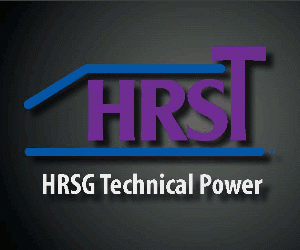Twenty years ago, few people probably thought that a tube cleaning technique for HRSGs attached to gas-fired turbines would be adapted from those used for solid-fuel boilers. Yet that’s where we are today. Carl Wise, Thompson Industrial Services, and Vince Barreto, PowerPlus Cleaning Systems, showed attendees at the HRSG Forum Supplier Workshop, Oct 7, 2021, that such a system can be elegantly designed and operated even if it’s dislodging and removing tons of material stuck on HRSG tubes.
The technology, originally called PowerWave+ when introduced by GE in 2006 as an online system for solid-fuel boilers, was converted from a sound-wave- to a shock-wave-based process, then acquired by PowerPlus in 2014 and adapted to offline cleaning. Simply, the acoustic driver attached to a sound horn, was replaced with a combustion tube to create a pulsed detonation cleaning device.
PowerPlus calls it Extraction Pressure Impulse Cleaning (EPIC). While the recording of the Forum presentation gives more details about the technology, what you really want to experience are the videos, which show how the device is engineered into a “navigation rig,” temporarily installed in the lanes between the tube bundles, and moved remotely from location to location while a technician monitors the cleaning on a 50-in. screen.
The rig is arranged for the HRSG being cleaned, which can be vertical or horizontal, and can accommodate baffles, which one astute attendee asked about. If sky-climber ports are not available for rig support, they must be added, although Barreto noted he’s only encountered one unit that was not so equipped. Another attendee wondered if the blasts would dislodge material on the ID side of the tube and the answer was “no”; the shock wave energy does not reflect through the tube wall.
Two of the key benefits of this technique over dry-ice blasting and open detonation, say Barreto and Wise, are avoiding scaffolding or sky-climbers and providing the capability to deep clean “every square foot of the heat-transfer surface.” Tube sections are subjected to the shock waves from the lanes on both the upstream and downstream sides.
Several case studies were presented with dramatic total tonnages of material removed, several inches of differential pressure restored, and 1-2 MW of output recovered.





